By Alex Trukan
Classical 4-5-1 formation out of possession is usually played in a compact way with both units positioned in narrow blocks. One of the dangers of compact defending are free spaces which arise in wide areas beyond midfield line. If the opposition has good quality wingers, this might create threats for full backs which might be isolated in 1v1 situations with no immediate support. This would be especially evident when the opposition switches the point of attack. One of the adaptions to prevent this happening is to drop wide midfielders deeper into the back line, playing the role of wing backs. This will ensure more support for full backs out of possession and make it easier to deal with opposition full backs if they get involved higher up the pitch.
Having wide areas covered by wingbacks, allows the back four to play even more compact and focus on protecting central areas with less distance needed to cover. This would mean that 8 players will be mainly protecting areas of the penalty box width. Wingbacks in turn, prevent a direct pass to opposition wingers when the ball is in the middle of the pitch.
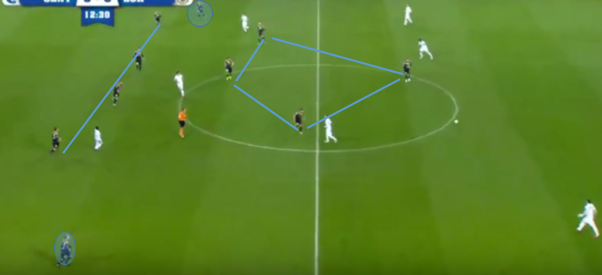
When the ball is on one side of the pitch, the opposite wing back stays wide in line with defenders’ unit. This prevents a direct switch of play and provides enough of a cover when opposition winger gets on the ball.
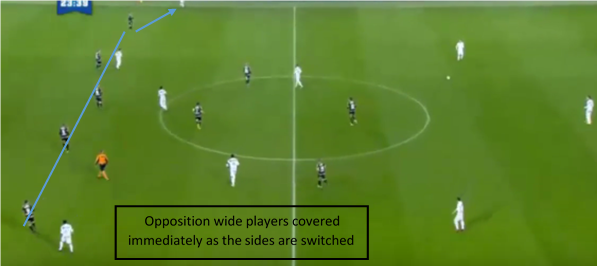
Having wide areas protected, gives additional licence for full backs to deal with opposition strikers and central midfielders. An example might be applying pressure on opposition central midfielder who is facing his own goal upon receiving the ball. Full backs’ role would therefore look more like a centre half’s role.
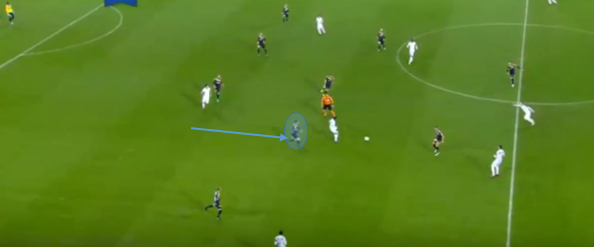
If the opposition winger and central midfielder rotate positions, wing back and full back should aim to mark zonally, remaining in their areas and passing on players. Full backs should be prepared to step up higher up the pitch and cover areas behind midfield three.
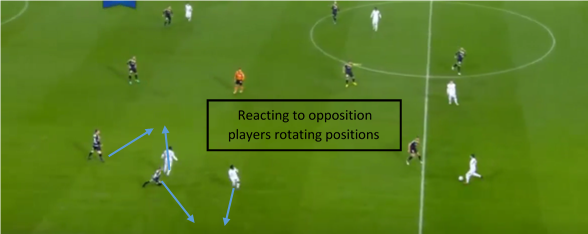
One of the key responsibilities of the ‘adapted’ wing back would be to deal with opposition full backs. This will create a 2v2 situation out wide and allow centre backs to mark two strikers. At the same time, opposite wing back and full back are left free to manage situation on the opposite wing in case the point of the attack is switched.
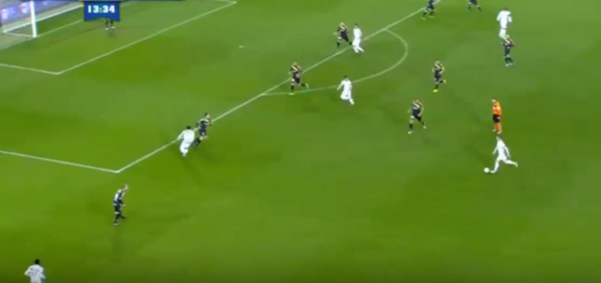
Another benefit of applying this strategy is the ability to force the opposition from wide areas into centre. This might create a great opportunity to set a pressing trap centrally where the team has an overload. Body position of adapted wing back should allow him to see the opposition winger and show him centrally.
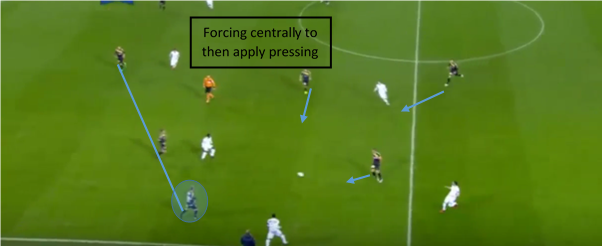
Adapting wide midfielders’ role into more defensive, wing backs’ type responsibilities will influence their involvement in attack, as upon winning possession they will be further away from the opposition goal. This will delay them from getting involved in the counter attack and place more responsibility in the initial phase of the counter attack on strikers and central midfielders.
By Alex Trukan, Development Coach, Nottingham Forest
@AlexTrukan


